The Cage-Free Illusion: Part 1
Source: WeAnimals Media
Imagine it is the year 2124!
And, in a world liberated from the shadows of industrial animal agriculture, a young scholar traverses history, probing the slow evolution toward a vegan world. Amidst the enigma of humanity's transition, the scholar encounters the perplexing saga of the cage-free campaign—a purportedly noble initiative tainted by misguided optimism. Activists, employing the foot-in-the-door strategy, aimed for incremental shifts toward cruelty-free futures. Yet, the scholar's exploration unveils a stark reality: the industry cunningly exploited this approach, weaponizing it to evade accountability and perpetuate their cruel practices unimpeded.
As we transition from the idyllic realms of our vegan future back to the present, we confront the harsh realities of today's egg industry. Cage-free systems, heralded as a step towards humane egg production, present themselves as an alternative to traditional battery cages. However, beneath the veneer of progress lies a landscape of exploitation and compromise.
Cage-free: A Definition
Cage-free housing systems in egg production aim to create open environments within barns or buildings, allowing hens to engage in natural behaviors such as perching, nesting, and dust bathing. Unlike conventional cage systems, which confine hens to small wire enclosures, cage-free setups eliminate individual cages to provide freedom of movement.
The primary difference between cage-free and cage systems is the absence of closed wire enclosures. In cage-free systems, hens have the liberty to move around and interact with their environment, promoting their physical and psychological well-being. Unlike free-range and pasture systems that offer outdoor access, cage-free environments typically house hens indoors within spacious barns or buildings, offering protection from predators and adverse weather conditions.
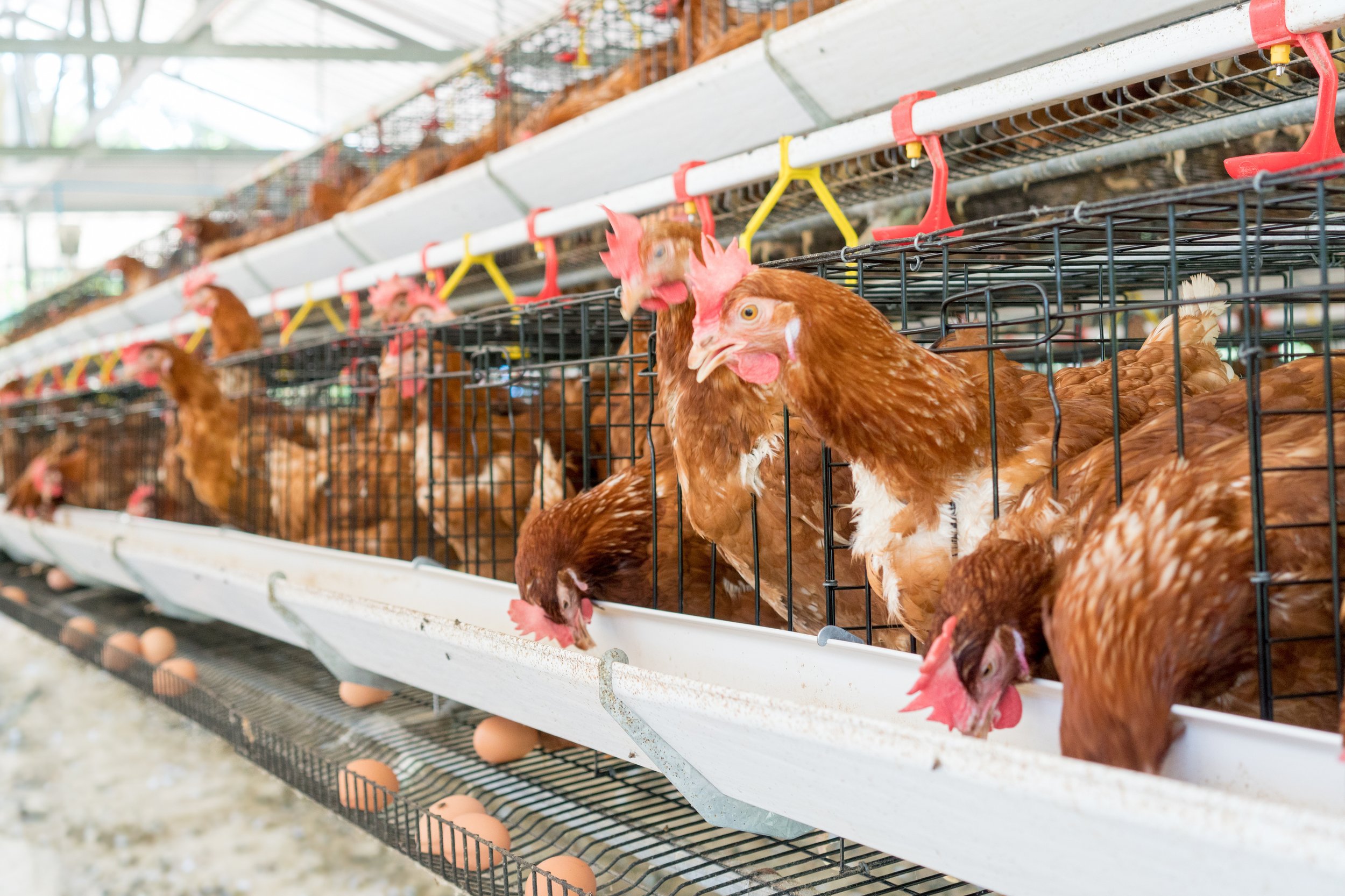
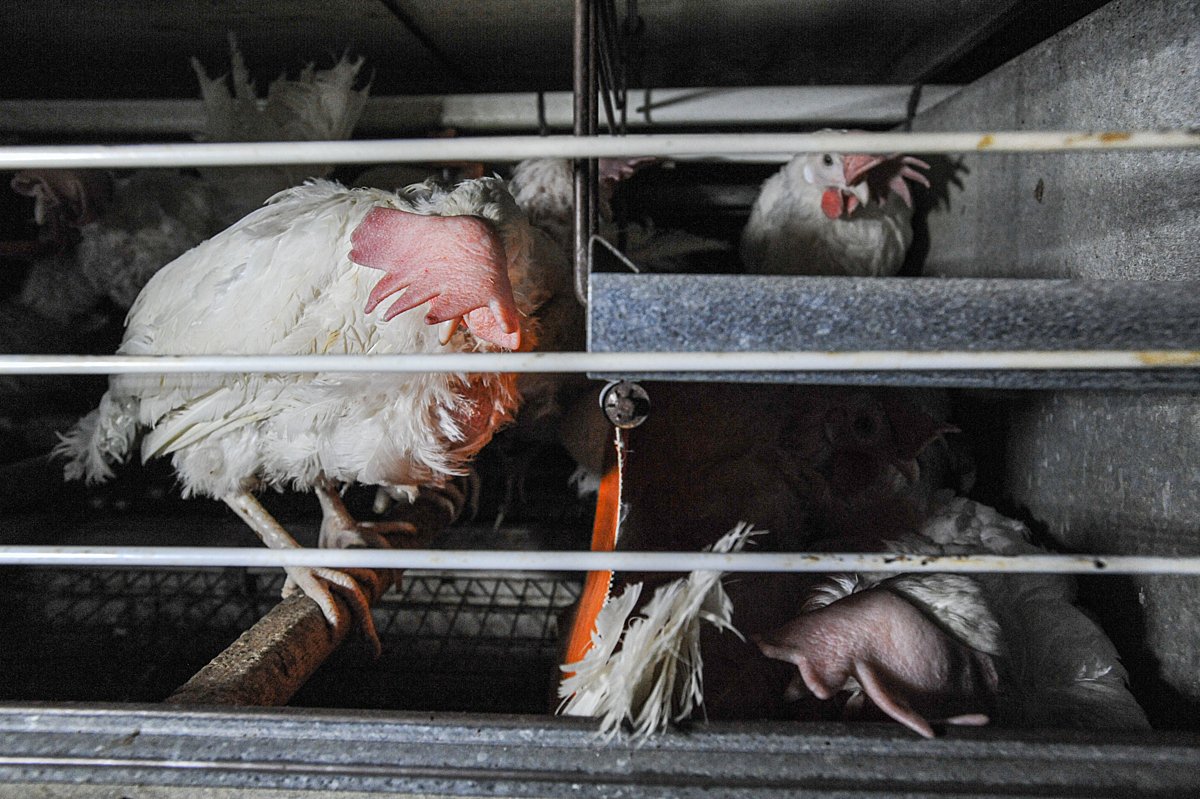
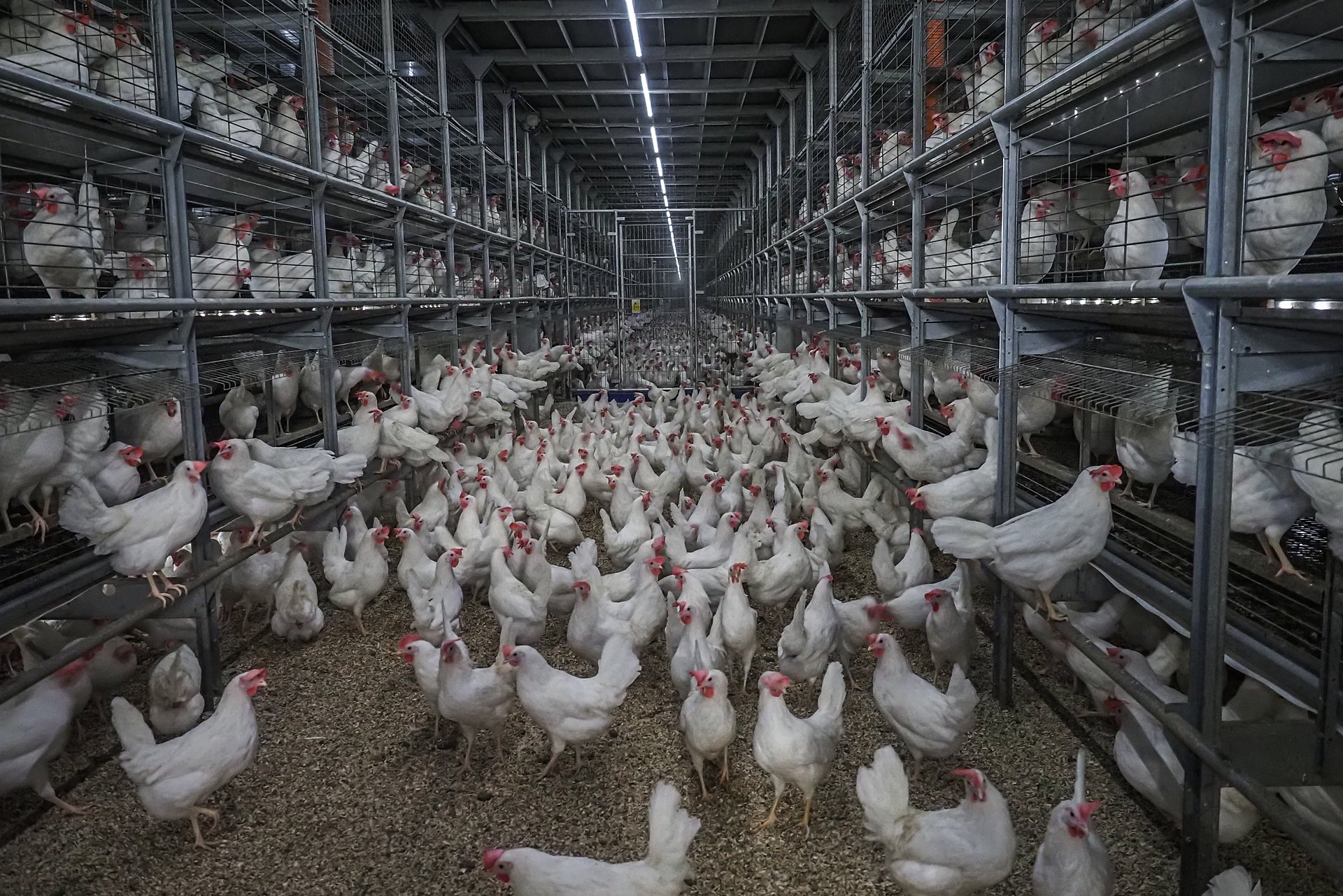
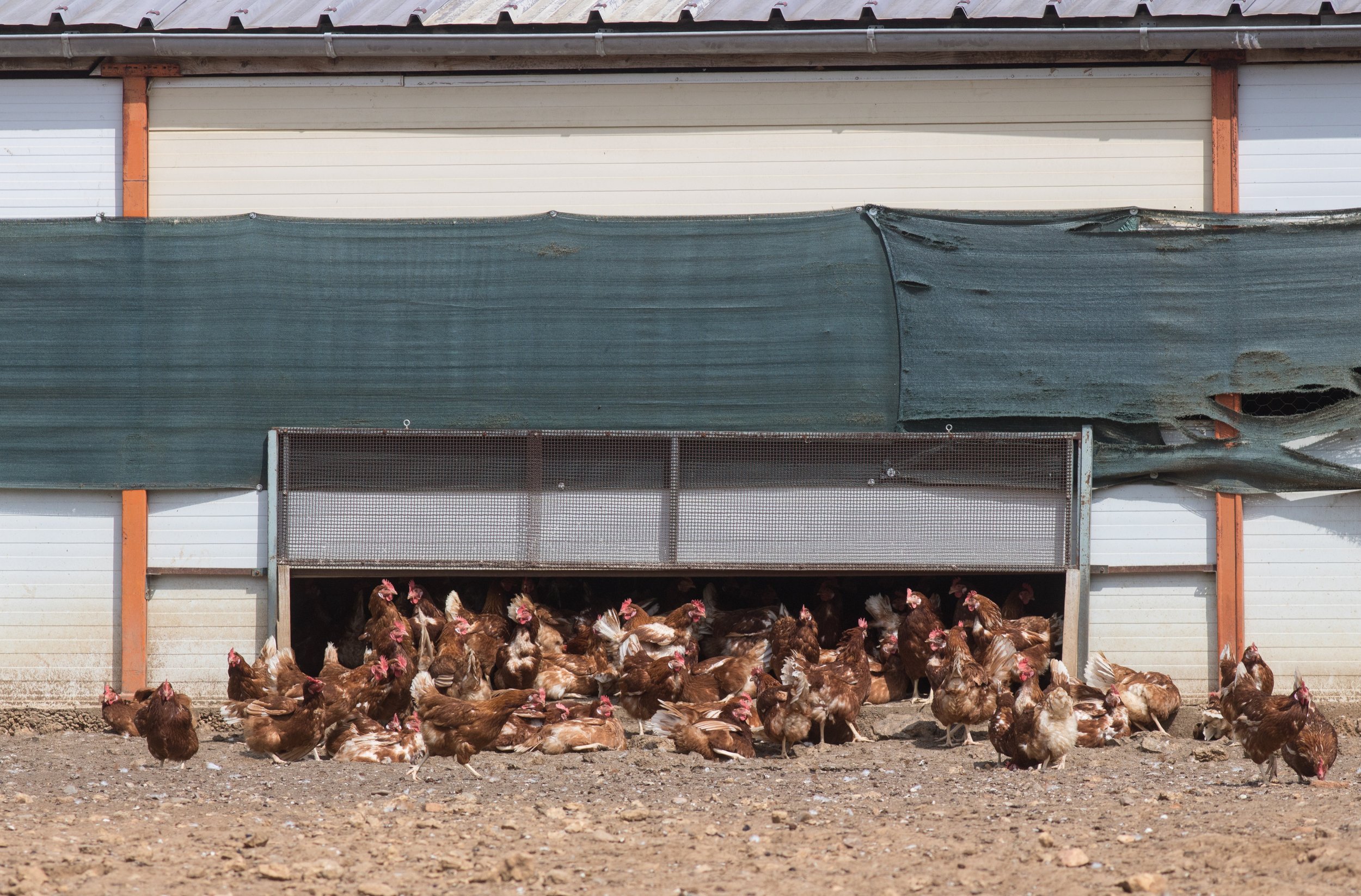
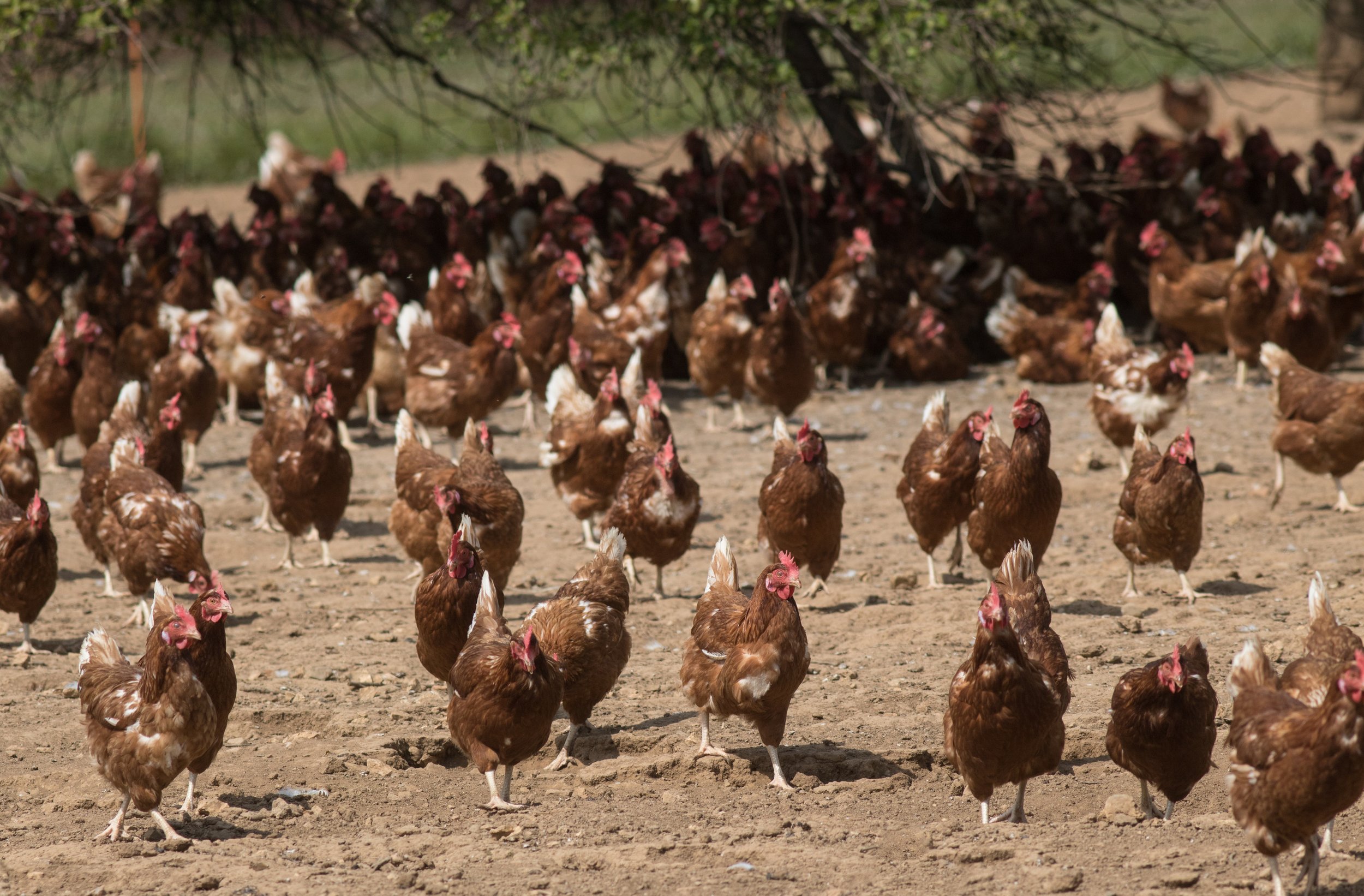
Cage-free: The History
The transition to cage-free egg farms began to gain momentum in the late 20th century, with early initiatives taking root in countries such as Switzerland and the Netherlands during the 1980s and 1990s. These pioneering efforts laid the groundwork for subsequent developments in cage-free egg production, serving as test cases for alternative housing systems aimed at improving the welfare of laying hens. As consumer awareness of animal welfare issues grew and regulatory scrutiny intensified, other countries soon followed suit, with significant advancements in cage-free farming observed across Europe, North America, and Oceania by the early 21st century.
Throughout the 2000s and 2010s, a wave of legislative reforms and corporate commitments further accelerated the transition to cage-free egg production worldwide. Countries such as Germany, Sweden, and the United Kingdom implemented regulations mandating the phase-out of conventional battery cages in favor of enriched and cage-free systems, signaling a paradigm shift in the global egg industry. Similarly, major retailers and food corporations began to adopt cage-free egg sourcing policies in response to consumer demand for more ethically produced eggs, driving further investment and innovation in cage-free infrastructure.
By the 2020s, cage-free egg farms had become more prevalent across the globe, with an increasing share of the supply chains in countries such as the United States, Canada, the European Union, Australia, and New Zealand. Despite initial resistance from the egg industry, the momentum towards cage-free production continued to grow, fueled by a combination of consumer activism, regulatory mandates, and corporate commitments to animal welfare.
As we peer into the landscape of cage-free egg production across different regions, it's essential to understand the nuanced approaches and regulatory frameworks shaping these systems. By examining the specifics of cage-free farming in the United States, Canada, the United Kingdom, the European Union, and Australia, we can gain deeper insights into the diverse practices and trends driving the evolution of egg production worldwide.
Cage-free: In Comparison
In the USA, Canada, the UK, the EU, and Australia, cage-free systems typically offer more space per hen compared to conventional cage systems, with average space allocations ranging from 550 to 750 square centimeters per hen. Flock sizes in cage-free systems vary widely, often accommodating tens of thousands of hens in large barns or buildings. The size of cage-free barns also varies, with some facilities spanning over 100 meters in length and 25 meters in width to accommodate the large number of hens housed within them. The transition to cage-free housing varies among producers and is influenced by factors such as market demand, regulatory requirements, and industry initiatives.
| Countries | USA | Canada | UK | EU | Australia |
|---|---|---|---|---|---|
| Number of Hens in Barn (Range, Average) | 1,000 - 100,000 (average varies) | 1,000 - 80,000 (average varies) | 1,000 - 80,000 (average varies) | 1,000 - 100,000 (average varies) | 1,000 - 80,000 (average varies) |
| Space per Hen | 1.0 - 1.5 sqm (10.8 - 16.1 sqft) |
1.0 - 1.5 sqm (10.8 - 16.1 sqft) |
1.0 - 1.5 sqm (10.8 - 16.1 sqft) |
0.75 sqm ( 8.1 sqft) |
0.55 sqm (5.9 sqft) |
| Depopulation Age | 80 - 100 weeks | 70 - 100 weeks | 72 weeks | 72 weeks | 80 weeks |
| Number of Eggs per Hen | 250 - 320 eggs/year | 250 - 320 eggs/year | 250 - 320 eggs/year | 250 - 320 eggs/year | 250 - 320 eggs/year |
| Cage-Free vs Caged | 39% cage-free, 61% caged |
17% cage-free, 83% caged |
79% cage-free, 21% caged |
55% cage-free, 45% caged |
57% cage-free, 43% caged |
| Cage-free by | 2025 | 2036 | 2027 | 2027 | 2036 |
Cage-free: The Hens
Hens, like many creatures, have natural behaviors and preferences that contribute to their well-being. They enjoy basking in the sunlight, scratching the earth for food, and seeking out safe, secluded spots for nesting. In small flock sizes, they establish pecking orders and maintain social structures.
However, the reality for hens in cage-free barns starkly contrasts with their natural inclinations. Instead of sun-drenched pastures and earthy substrates, they find themselves confined within crowded, windowless buildings. Opportunities for natural behaviors like dust bathing and foraging are limited, with thousands of hens competing for space and resources. Nesting areas may lack privacy, disrupting the hens' instinctual need for seclusion during egg-laying.
Despite claims that cage-free systems offer a more humane alternative to traditional battery cages, a closer examination reveals significant shortcomings.
By comparing key factors such as hatchery practices, flock sizes, laying illnesses, and early slaughter rates, we can gain a comprehensive understanding of the true impact of egg production on animal well-being.
| Battery Cages | Enriched Cages | Cage-Free | Free-Range | Pasture Raised | |
|---|---|---|---|---|---|
| Hatchery Sourced (Male Chick Culling) | Yes | Yes | Yes | Yes | Yes |
| Bred for Overproduction | Yes | Yes | Yes | Yes | Yes |
| Laying Illnesses | Yes | Yes | Yes | Yes | Yes |
| Early Slaughter | Yes | Yes | Yes | Yes | Yes |
Hatchery Sourced (Male Chicks Culling): In the egg industry, hatcheries are responsible for supplying laying hens. However, the process of hatchery sourcing involves separating male and female chicks shortly after hatching. Male chicks, deemed economically nonviable for egg production, are typically culled, often through methods like maceration or gassing. While cage-free systems do not directly address the issue of hatchery sourcing, they perpetuate the demand for hatchery-supplied hens, contributing to the inherent cruelty of chick culling practices.
Bred for Overproduction: Selective breeding within the egg industry aims to maximize egg production efficiency, typically at the expense of hen well-being. Hens in cage-free systems are bred for traits such as high egg production rates and feed efficiency, leading to overproduction and strain on their bodies. While cage-free environments may offer slightly more space and freedom of movement compared to traditional cages, the underlying issue of over breeding persists, exacerbating health problems and reducing overall welfare.
Laying Illnesses: Cage-free housing systems, despite providing hens with minimally more space and some environmental enrichment, do not eliminate the risk of laying-related health issues. High egg production rates can lead to reproductive disorders such as egg binding and prolapse, as well as metabolic disorders like osteoporosis. Additionally, the crowded conditions in cage-free barns may increase the spread of diseases and parasites among hens, further compromising their well-being.
Early Slaughter: While cage-free systems may offer a slightly longer lifespan for hens compared to battery cages, the ultimate fate of laying hens remains the same—early slaughter. Hens in cage-free environments are typically slaughtered after one to two years of egg production, far short of their natural lifespan. Despite claims of improved welfare, cage-free systems perpetuate the cycle of premature slaughter inherent in the egg industry, underscoring the ethical concerns associated with egg production as a whole.
As we conclude our exploration of cage-free egg production, it's evident that the industry's narrative of ethical progress is far from straightforward. Despite the promise of marginal improvements in hen welfare, cage-free systems fail to address fundamental issues ingrained in egg production. From unresolved hatchery practices to premature slaughter, the realities of cage-free farming underscore the pressing need for a comprehensive reassessment of our treatment of animals within our food systems.
Before wrapping up, it's essential to highlight the shortcomings of corporate commitments and the accountability of animal rights organizations. Despite promises of reform, many corporations have failed to deliver on their pledges, while some animal rights groups have struggled to hold the egg industry accountable in certain regions for falling short on commitments.
Moreover, the proliferation of cage-free campaigns championed by welfare organizations worldwide has ignited significant debate within vegan and animal rights circles. Join us as we examine the motivations behind these campaigns, their impact on consumer perceptions, and whether they genuinely serve the interests of animal welfare or inadvertently perpetuate the status quo of animal exploitation in Part 2.
Juliane Priesemeister, Executive Director
Juliane worked almost a decade for an international corporation as an information designer. Generating compelling visual stories was her daily deed, but as much as she enjoyed the creative work the big corporation environment left her hungry for substance and impact.
When she started her yoga journey a few years ago the “do no harm” philosophy pushed her to align work with her personal ethics and values. Today she uses her omnibus skill set, including marketing communications, economics, and graphic design, to reveal the truth about the egg industry to consumers.







